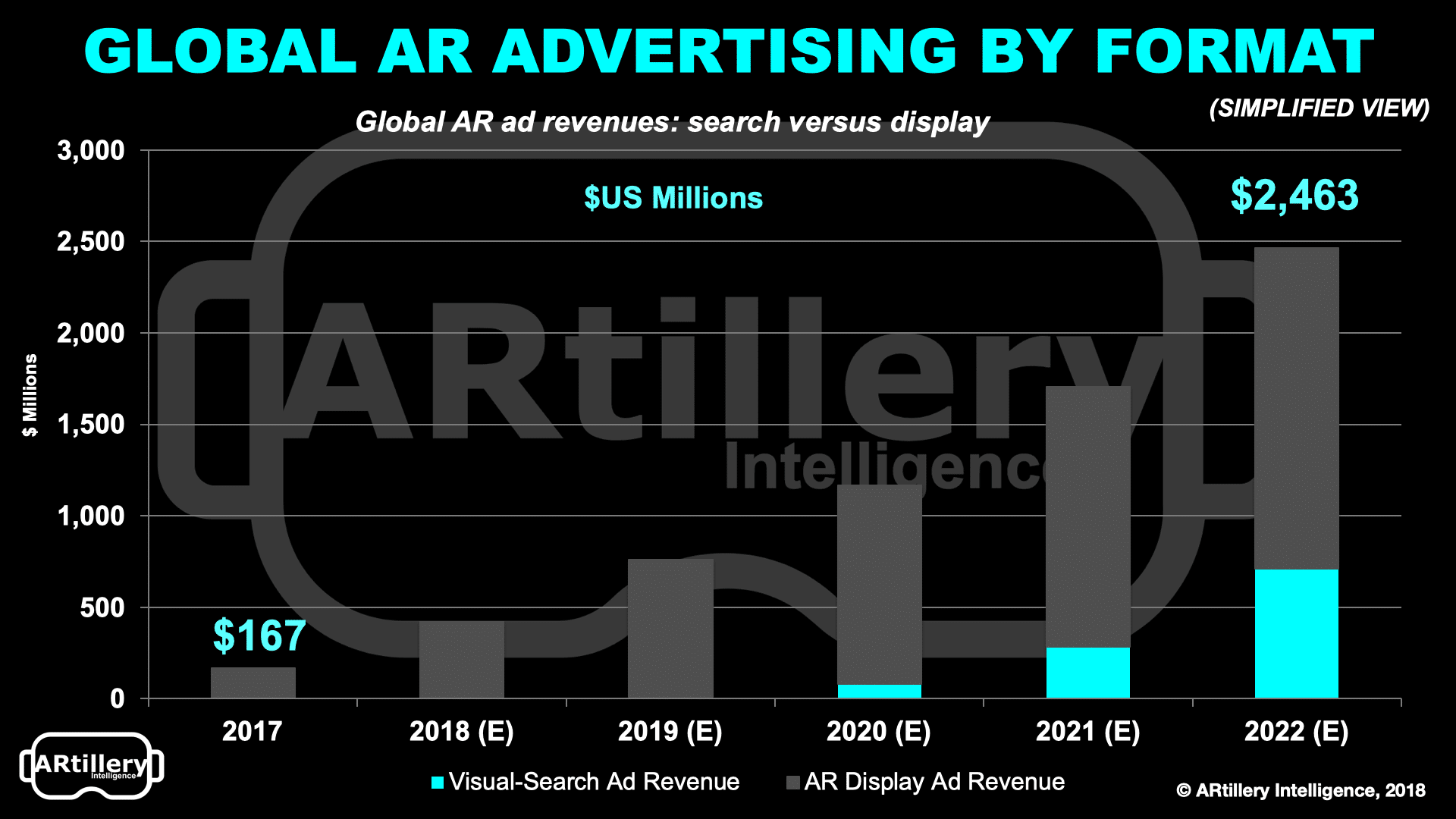
This post is adapted from ARtillery Intelligence’s latest report, XR 2018 Lessons, 2019 Outlook. It includes some of its data and takeaways. More can be previewed here and subscribe for the full report.
2018 was a reflective year for XR. After an exuberant 2016, followed by a corrective 2017, XR industries settled into a moderate pace. This includes reset expectations on the size and timing of AR & VR markets, as well as acceptance that aspirations will take longer to materialize.
But we saw deep-pocketed tech giants charge ahead with XR. With strong contention that XR represents the next computing shift, they’re investing in the future of their platforms by gaining early market share and technological edge. And they’re each attacking XR from different angles.
Despite XR market softness, it was these moves from tech giants that provided confidence in 2018 for the eventual market arrival. Indeed, there’s no bigger vote of confidence in a technology and a market than billions of dollars in long-term bets. We believe this will continue into 2019.
#3. AR Ads Drive Real Revenue.
Picking up where we left off last week in drilling down on our specific 2018 lessons and 2019 predictions, AR advertising will be a meaningful revenue driver. In fact, among the XR revenue categories projected over the coming years, AR advertising is one of the few already bearing fruit.
According to ARtillery Intelligence’s Fall forecast, the sector made $418 million in 2018, and is projected to grow to $2.46 billion by 2022. This involves mostly branded AR lenses from social apps like Snapchat and Facebook, but will begin to broaden into areas like visual search.
Building from the social use case of sharing AR lenses, these have been monetized as ways to visualize products in one’s space or on their face. It’s proving valuable to brand advertisers given the ability for “full funnel” consumer engagement – spanning brand awareness and conversions.

This is starting just as the digital ad world did, with display advertising out of the gate first. Following that will be search-based AR advertising which Google will cultivate through its visual search efforts. But despite advantages, weakness in mobile AR ads should be acknowledged.
For example, there’s still a relatively low overall user base of about 129 million active AR users globally. There are also inherently short AR sessions (think: arm fatigue). So In combination, these factors naturally diminish ad inventory, thus gating its near-term revenue opportunity.

As for a concrete and quantifiable 2019 prediction, we project AR advertising to reach $761 million this coming year. This will continue to be dominated by display advertising (social lenses). Visual search will gain ground on display in later years as its complexity will cause it to bloom late.
Meanwhile, Facebook will make a more aggressive push with AR ads as diminishing news feed ad inventory forces it to create other ad opportunities. These will include AR ads in Messenger and, more notably, Instagram. These and other format evolutions will drive advertiser demand.
For a deeper dive on 2108 lessons and 2019 predictions, see the full report. Also see ARtillery Intelligence’s separate standalone report on AR Advertising.
For deeper XR data and intelligence, join ARtillery PRO and subscribe to the free AR Insider Weekly newsletter.
Disclosure: AR Insider has no financial stake in the companies mentioned in this post, nor received payment for its production. Disclosure and ethics policy can be seen here.
